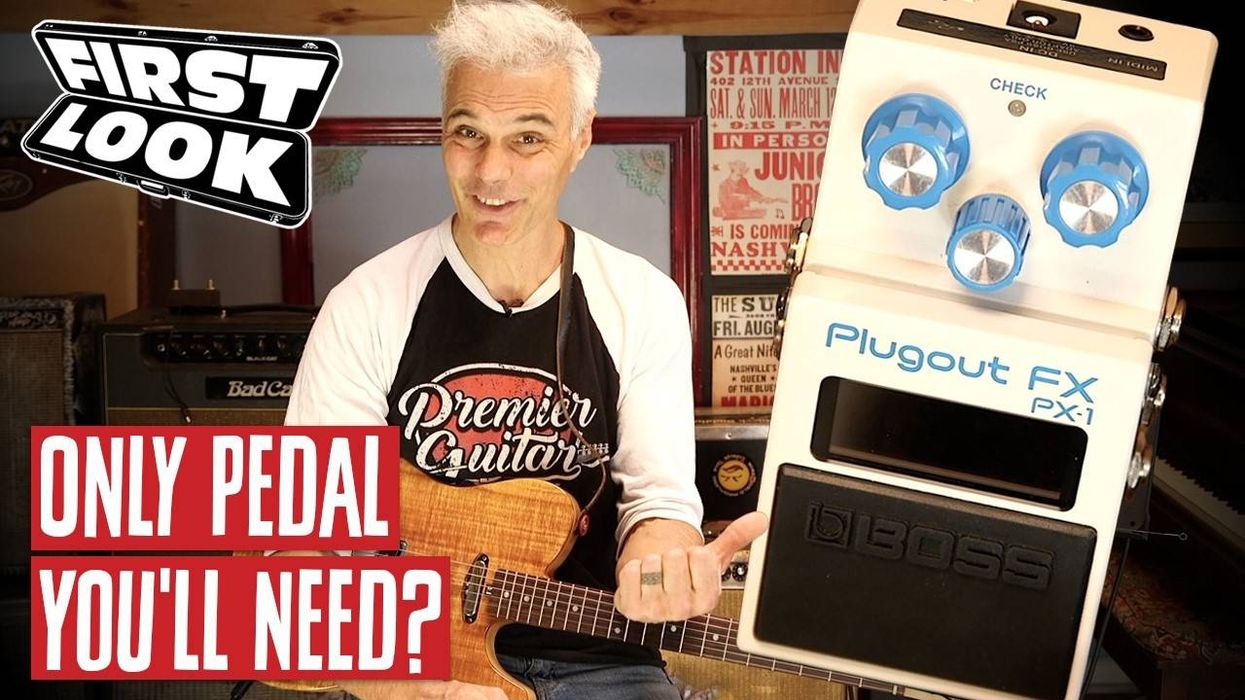He's played with Santana, Stevie Wonder, and a host of other greats, and his lessons and demos on YouTube have garnered more than 15-million views—so there's a good chance you already know this Nashville-based guitarist.
Now, take a look inside his studio and eyeball an impressive armada of guitars, amps, and effects with PG's John Bohlinger.
[Brought to you by D'Addario XPND Pedalboard: https://www.daddario.com/XPNDRR]
Guitars
(Ronquillo has a lot of 6-strings, but we narrowed down this Rundown to a few favorites that do most of the heavy lifting.)
Pretty in Pink

This Nash S-81 features an EMG SL20 Pro Series Steve Lukather signature set of pickups, and it's strung with a D'Addario NYXL .010–.046 set.
Original Senn
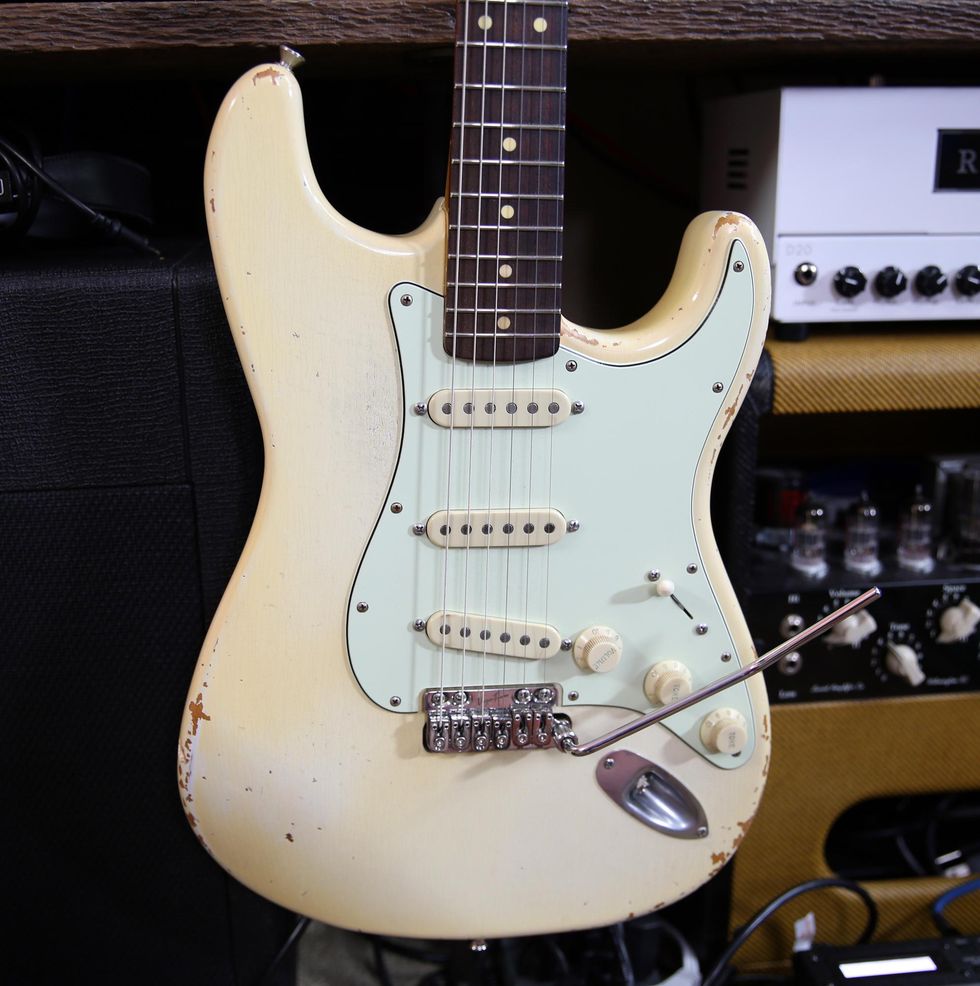
This is one of Nashville builder Jeff Senn's Fullerton S-styles, with Lollar pickups, a Vega-Trem tremolo, and a set of D'Addario NYXL .010–.046s.
In for the Pun
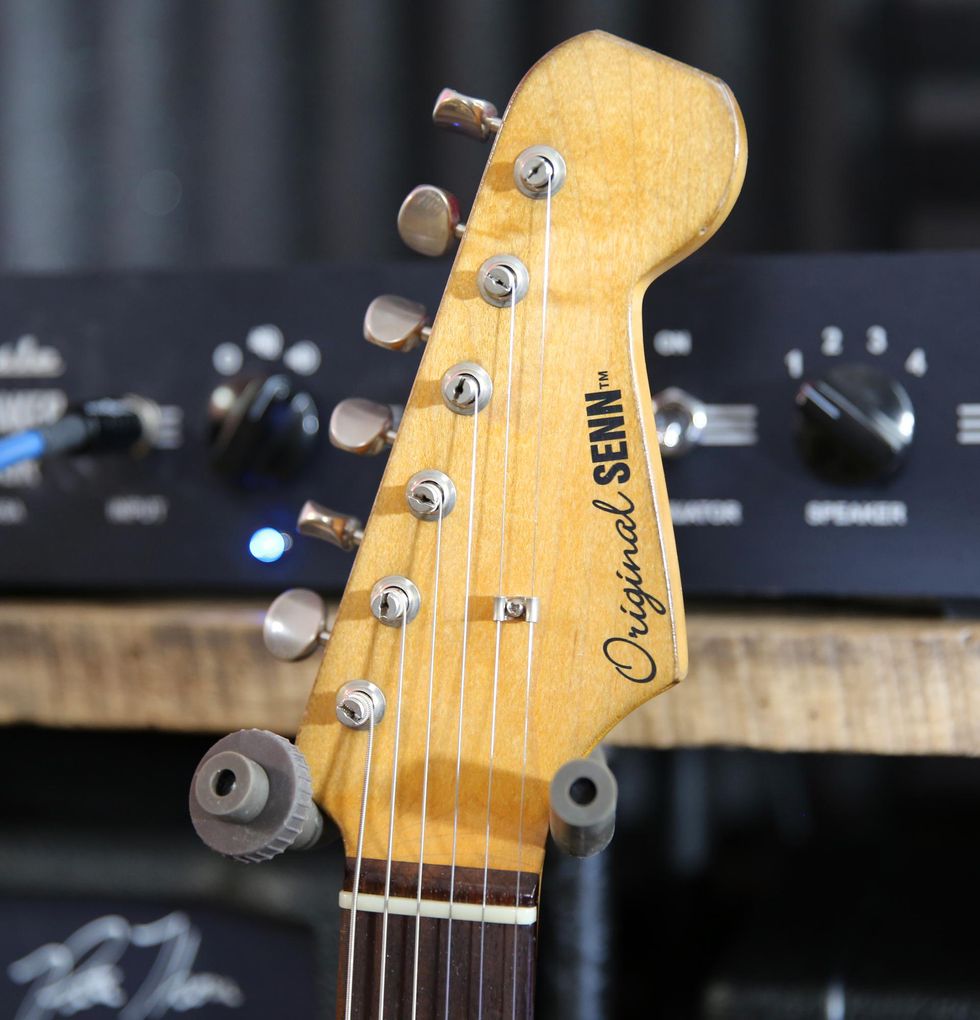
Yes, Senn thinks this is funny, too.
Bet on the Knaggs
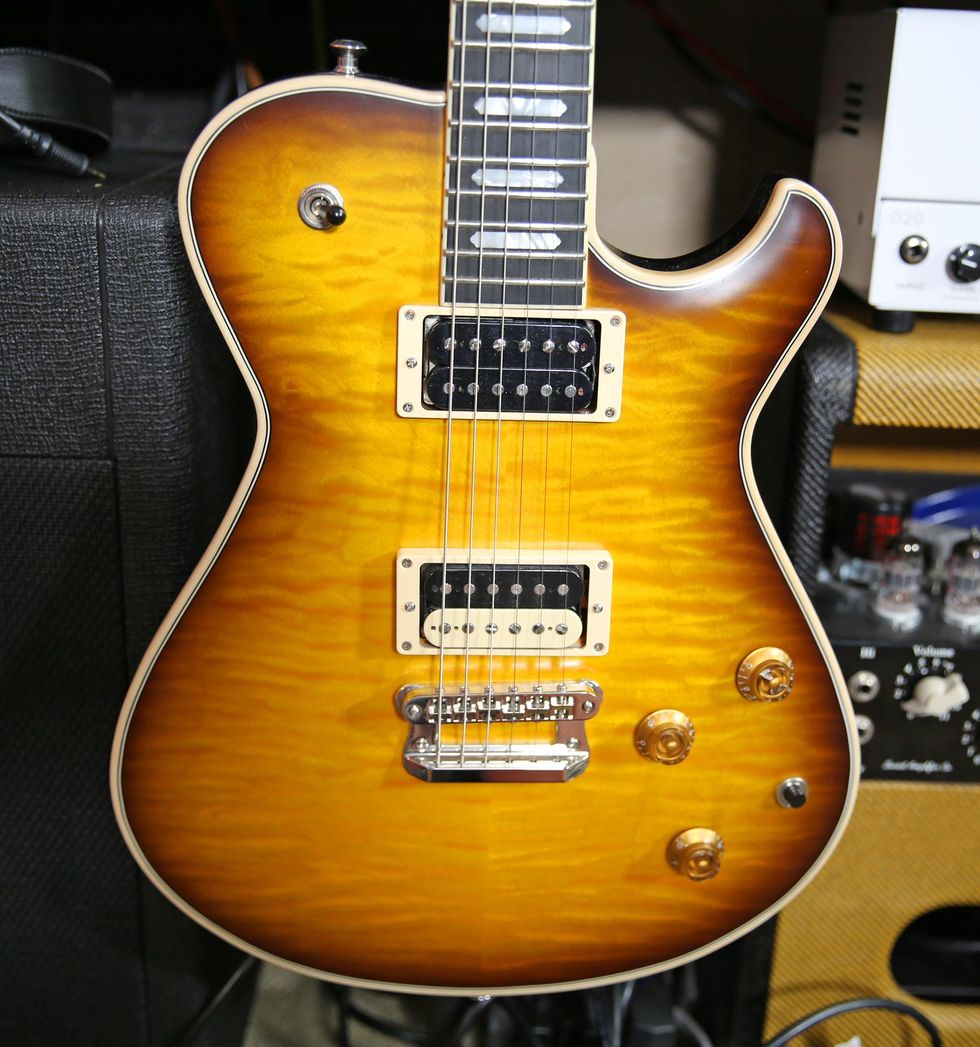
Here's a Doug Rappaport signature Knaggs Kenai DR, featuring a Seymour Duncan Slash neck pickup and a Duncan Custom Shop '78 in the bridge. Ronquillo added a String Butler tuning stabilizer. Once again: D'Addario NYXLs, .010–.046.
Photo Finish
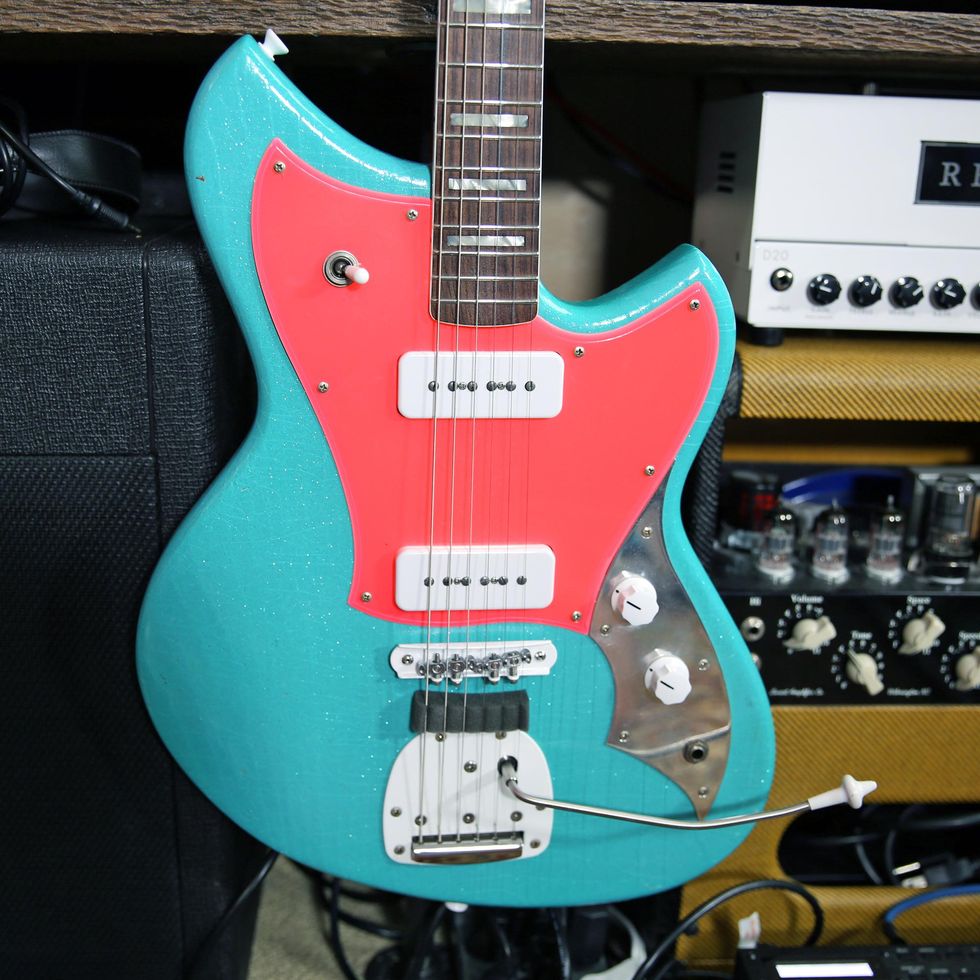
This Novo Custom Serus J features a one-of-a-kind "Ron-Tealio" finish with Brandonwound P-90s. Same D'Addario NYXLs. Cool speed dials and whammy bar tip, yes?
S-Style with a Twist
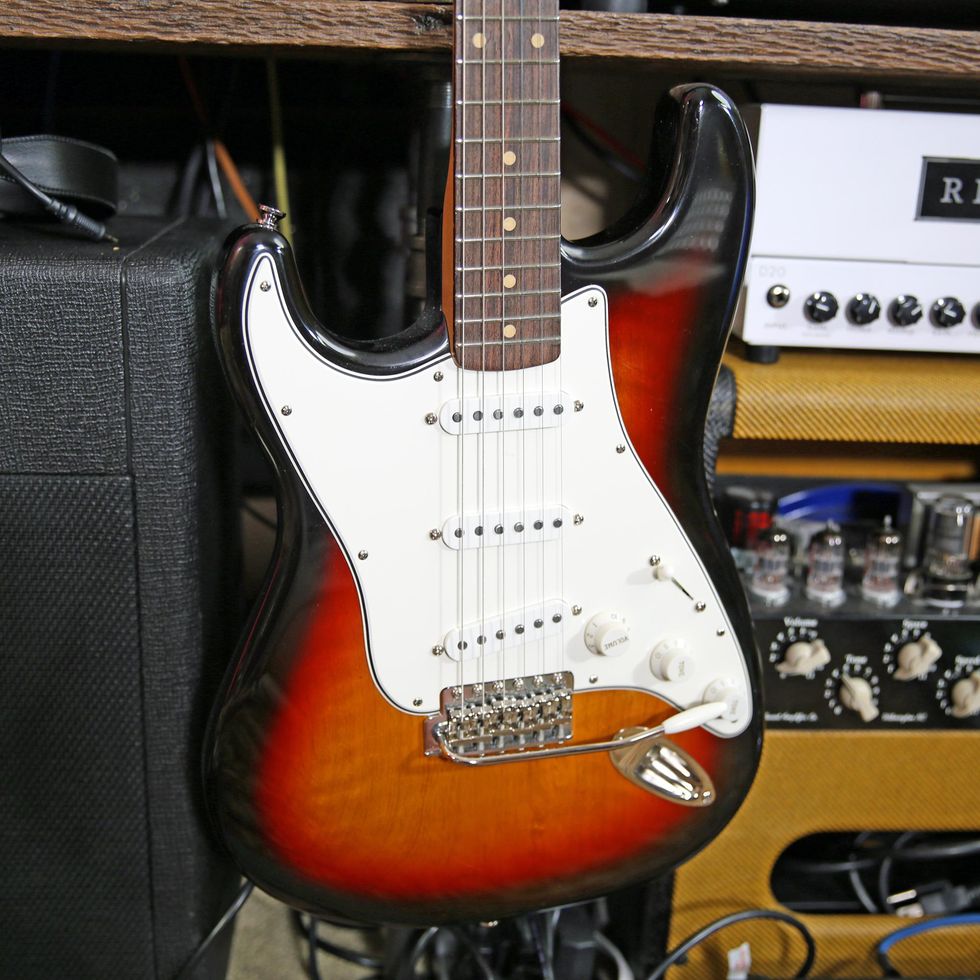
And now for something completely different, here's an RS Guitarworks Twisted. The guitar has an alder body and a rosewood neck, with Fralin Woodstock pickups. RJ uses a Stringjoy Hendrix set: .010, .013, .015, .026, .032, and .038. The lighter G string supposedly provides a more balanced tone.
Make Way for Junior
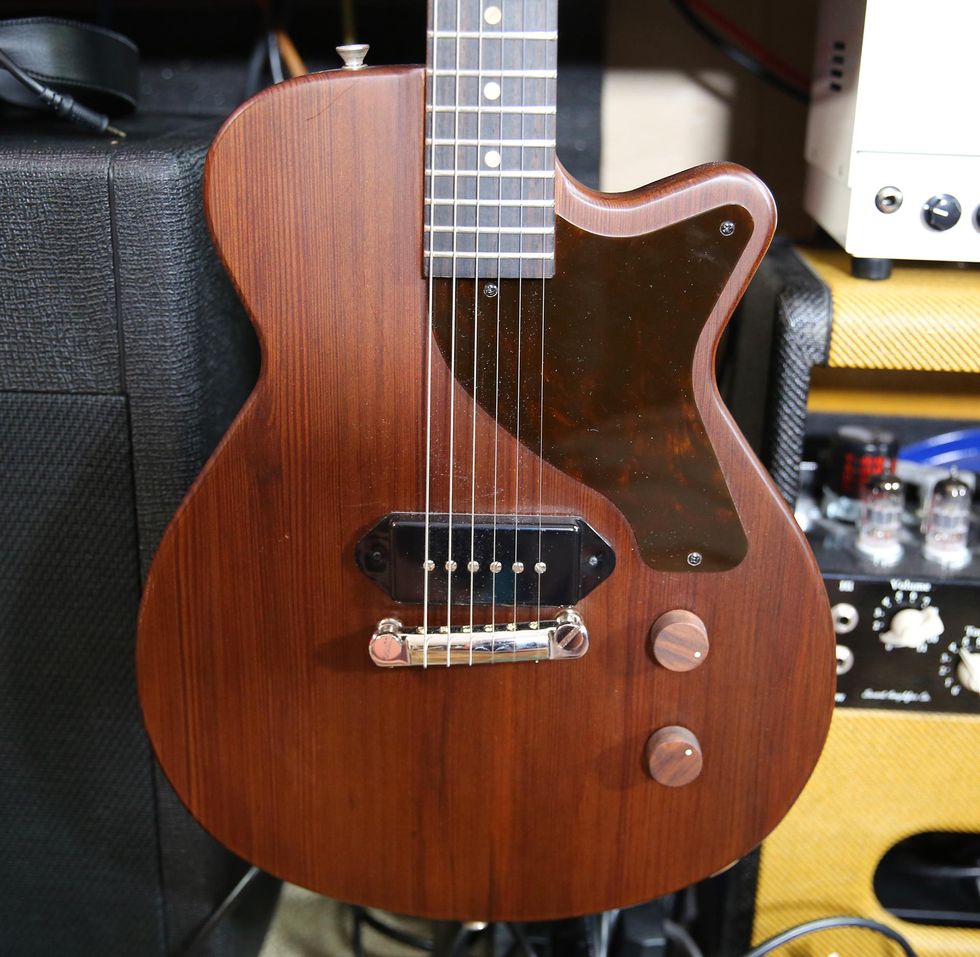
Here's another axe with history in its genes: a Grez Mendocino Junior. In classic Junior form, it has a 1-piece body, but it is made from reclaimed old-growth redwood. The neck is solid Honduran mahogany with a Macassar ebony fretboard. The pickup is a dog ear Wolftone MeanerP90. This one sports RJ's usual D'Addario NYXLs.
A Barney—Not the Purple One

This cherry sunburst 1964 Gibson Barney Kessel Custom is all stock, replete with bow-tie inlays and elegant binding. For a bit more beef, it's strung with Thomastik-Infeld George Benson strings: .012, .016, .020w, .028, .039, and .053. Note the cool badge at the bottom of the tailpiece.
Amps—Loud City

RJ has a lot of amps, so we narrowed it down to those in "Tonehenge," the part of his studio that houses his amplifiers that are in current heavy rotation.
Morgan Horsepower
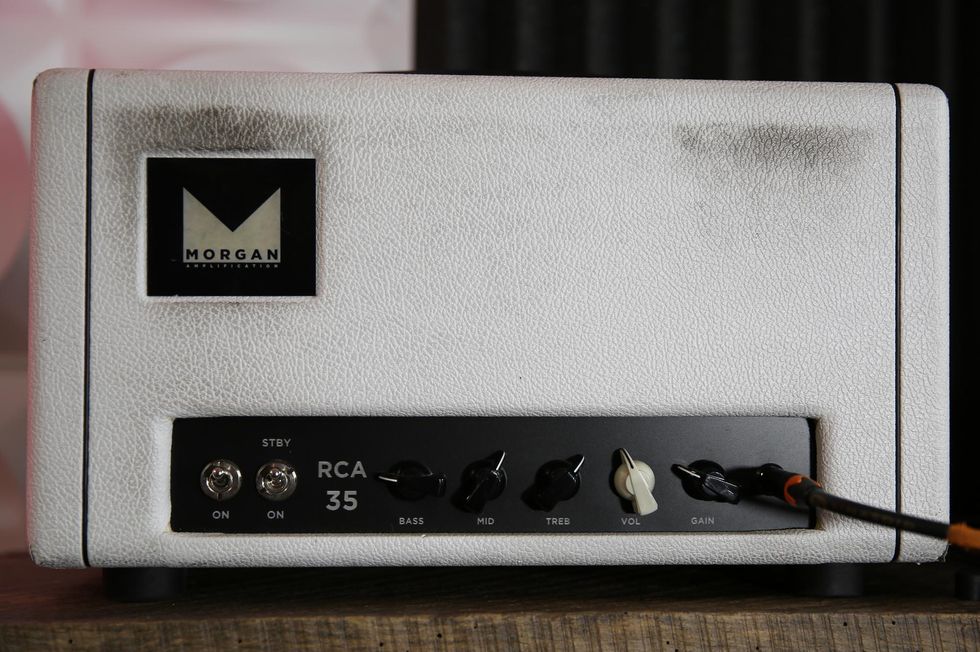
Want classic American amp tone? Here's your pony. This 35W head uses two 5881 power tubes, two 12AV7s, and a GZ34 rectifier.
Yes, Suhr
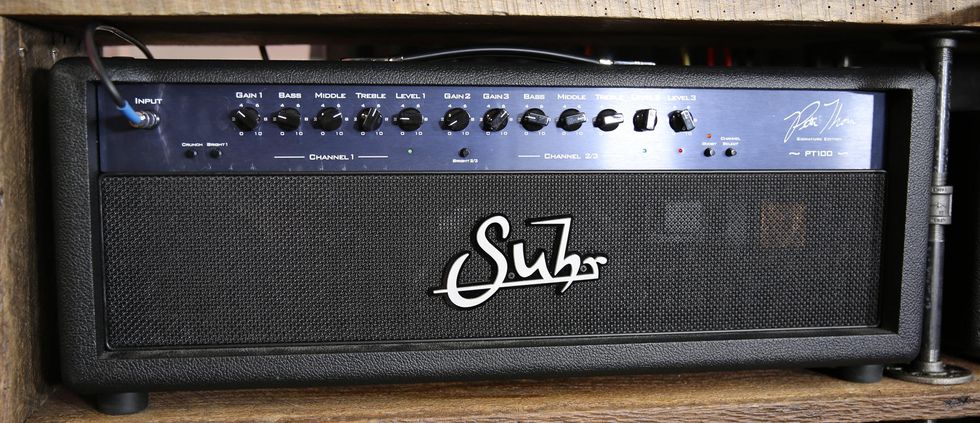
This Pete Thorn signature has three channels, an effects loop, four EL-34 power tubes, six 12AX7 preamp tubes, and is set up for MIDI control.
Sibling Revelry

This Friedman Twin Sister uses 40 watts to go for classic British tone. It's inspired by the Marshall JTM 45. Each channel has a bright switch and a 3-position gain switch, and there are two 5881s and five 12AX7s lurking inside.
Sultan of String
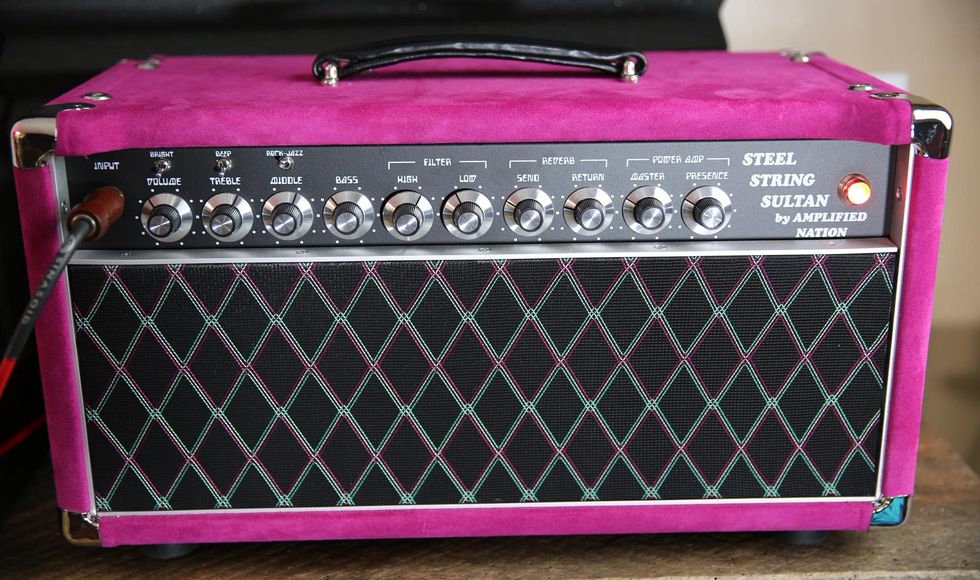
With a nod to Howard Dumble, here's Amplified Nation's Steel String Sultan—a 25 watt version of this custom build. As you'd expect, the Boston-area company has packed it chock full of top-of-the-line components, including orange drop and NTE caps, and Classic Tone and Heyboer transformers.
White Box of Rock
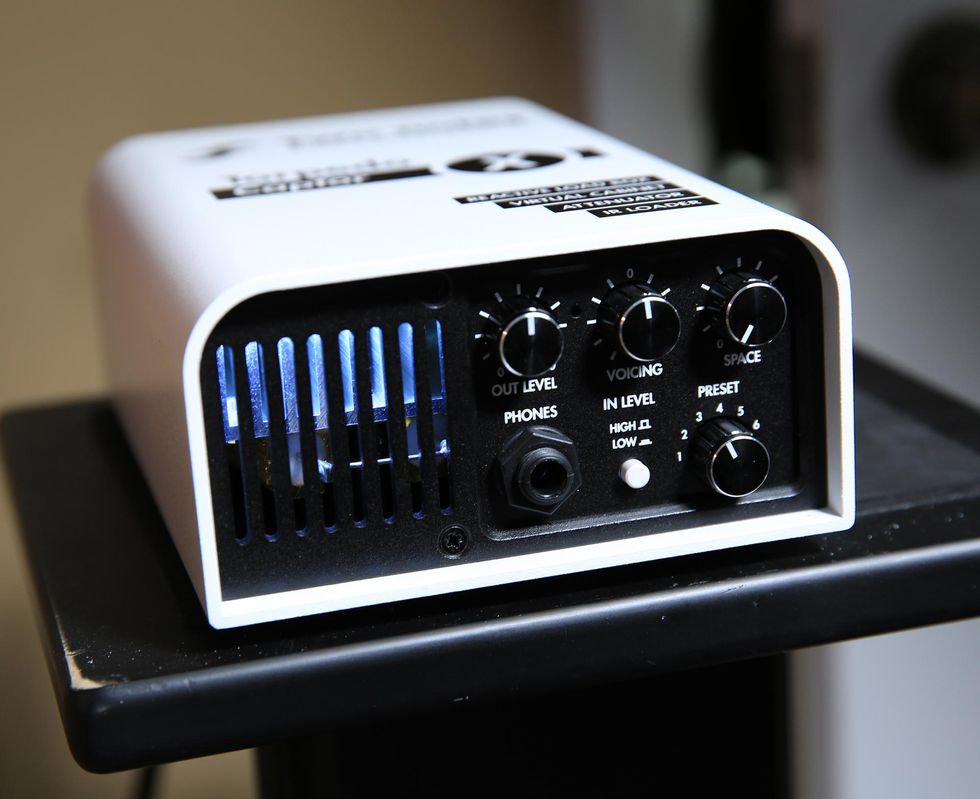
Helping Ronquillo have even more options when it comes to recording and routing, he employs this Two Notes Torpedo Captor X Stereo Reactive Load Box.
The Chains We Forge in Tone
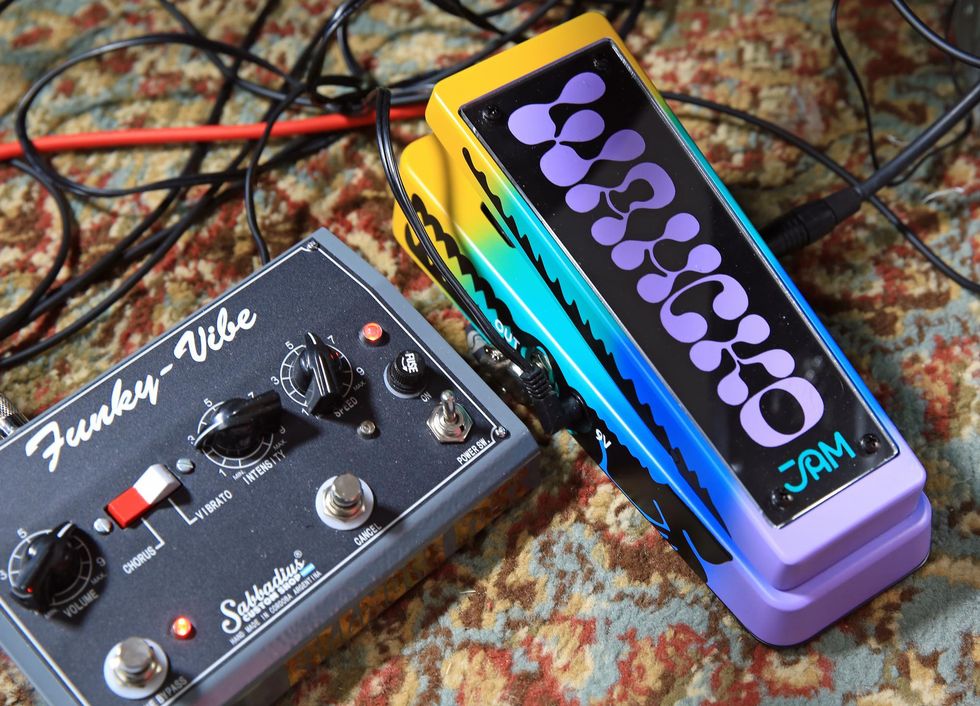
RJ is a pedal guy. His rig flows through a series of boards, but the signal from his guitar firsts lands here, at a JAM Pedals Wahcko wah and a Sabbadius Funky-Vibe Fillmore East edition.
Like a Peach
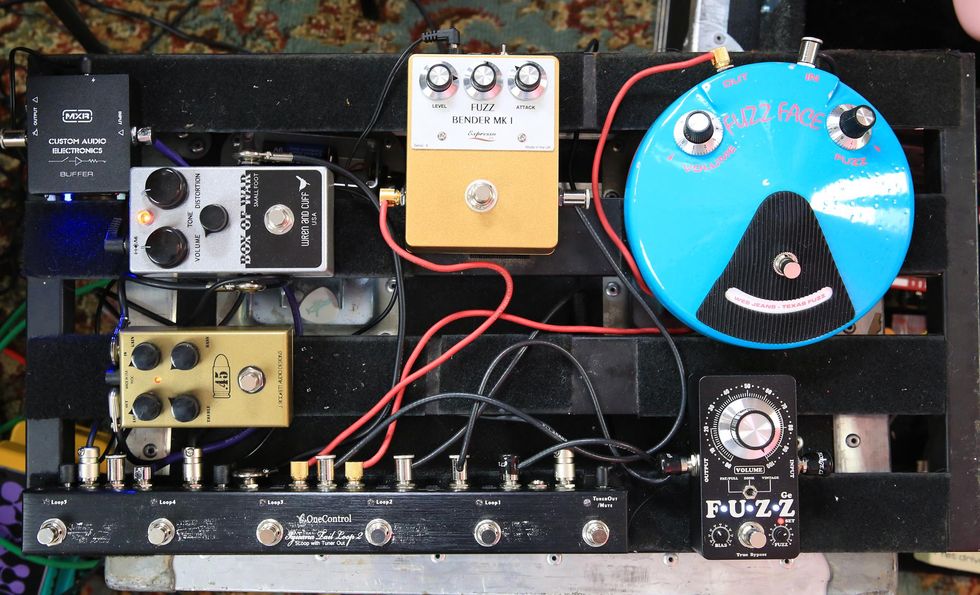
From there, the signal hits his "Fuzz Board," which includes a One Control Iguana Tail Loop 2 switcher feeding a King Tone MiniFuzz germanium, a Wes Jeans Texas Fuzz silicon fuzz face clone, an Expresso FX Fuzz Bender Mk 1, a Wren and Cuff Small Foot Box of War muff-style, a J.Rockett .45 Caliber overdrive, and an MXR CAE buffer.
Switch It Up
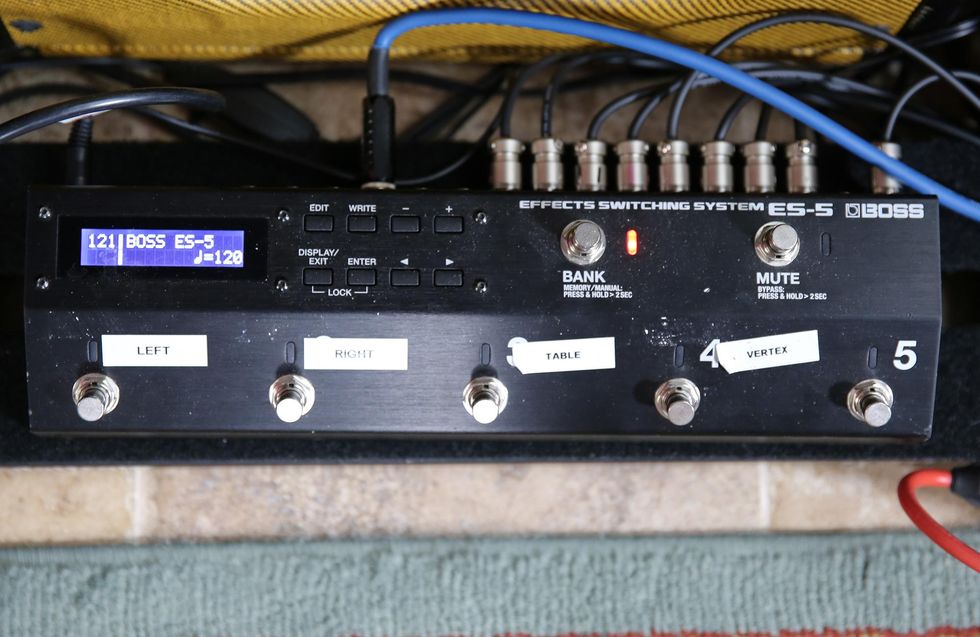
Since there are three more pedalboards in RJ's setup, this Boss ES-5 Switcher is sensible
The Main Vein
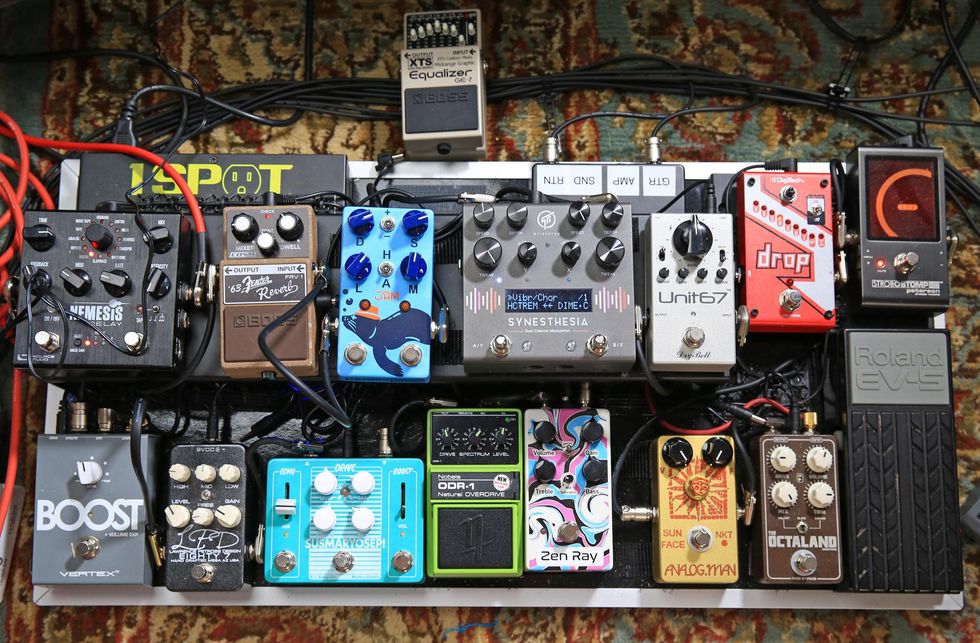
A lot goes down here. When that Boss switcher sends the guitar signal this way, it encounters a Peterson StroboStomp HD tuner, a DigiTech Drop, a DryBell Unit 67 EQ/boost/comp, a King Tone Octaland mini octave pedal, an AnalogMan Sun Face, a Pogo Pedals Zen Ray overdrive, a Nobels ODR-1, his signature Mythos Susmaryosep! boost/overdrive/echo, an LPD Eighty 7 distortion, a Vertex Boost, a Roland EV-5 expression pedal, a GFI Synesthesia multi-modulator, JAM's Harmonius Monk tremolo, and a Boss FRV-1 '63 Fender Reverb.
Enter to win pedals from RJ's main board seen above!
Next!
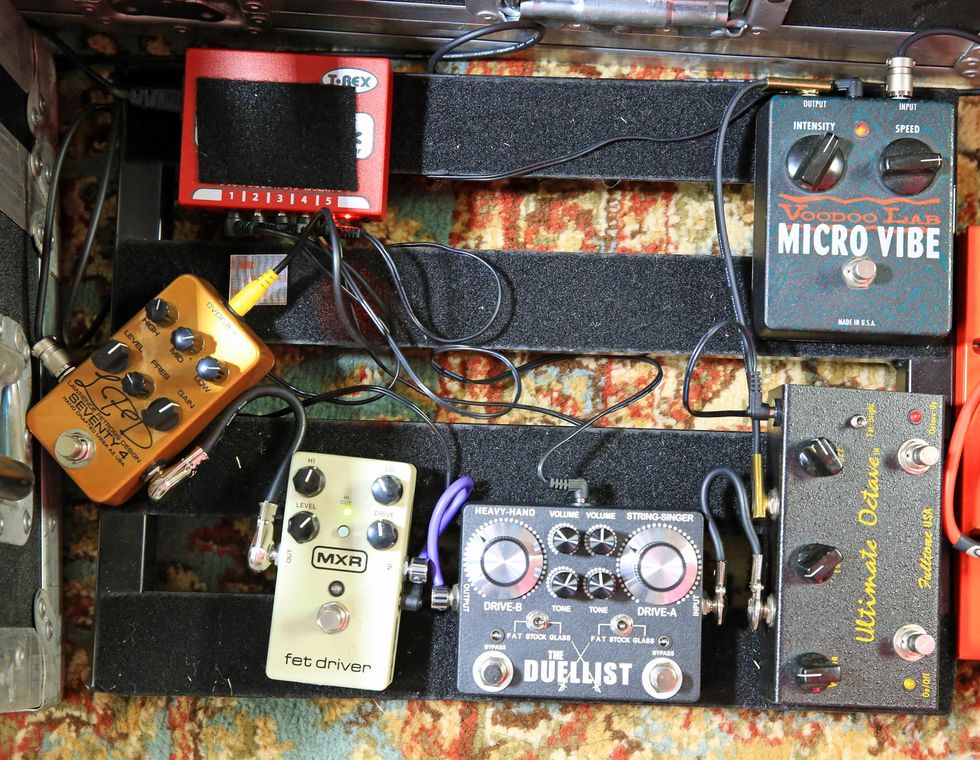
Currently to the right of the main board, these: a Voodoo Lab Micro Vibe, Fulltone's Ultimate Octave, a King Tone Duellist dual overdrive, MXR's FET Driver, and a LPD Seventy4 overdrive.
But Wait, There's More
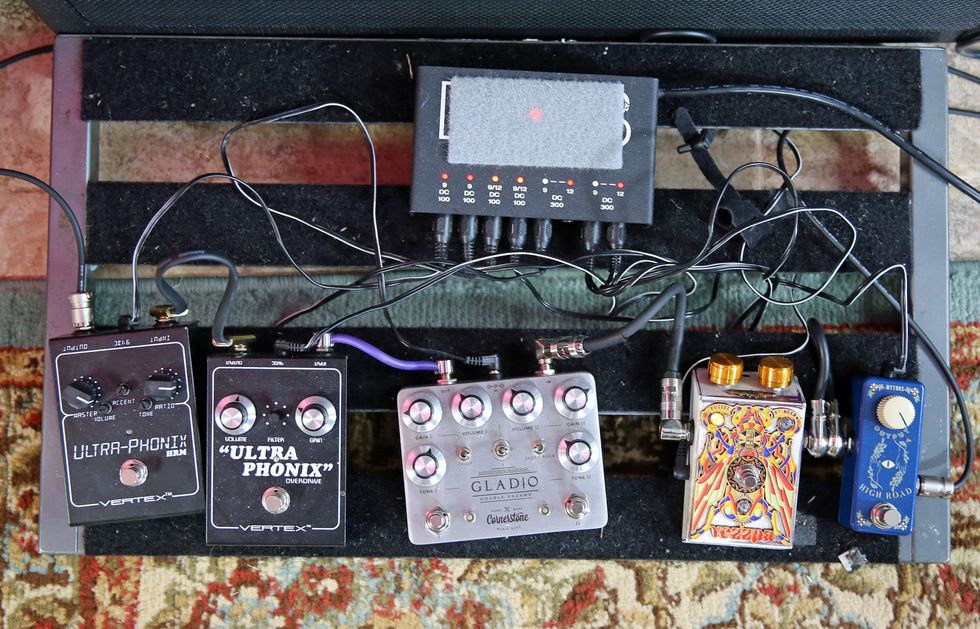
You ain't seen nuthin' yet. Okay, you've seen a lot. But there's also, to the left of the main board: a Mythos High Road mini fuzz, a Beetronics Vezzpa Octave Stinger Fuzz, a Cornerstone Gladio dual overdrive. a Vertex Ultra Phonix Overdrive, and a Vertex Ultra Phonix HRM overdrive. He uses Truetone, Cioks, and T-Rex power supplies.
And Even More!!
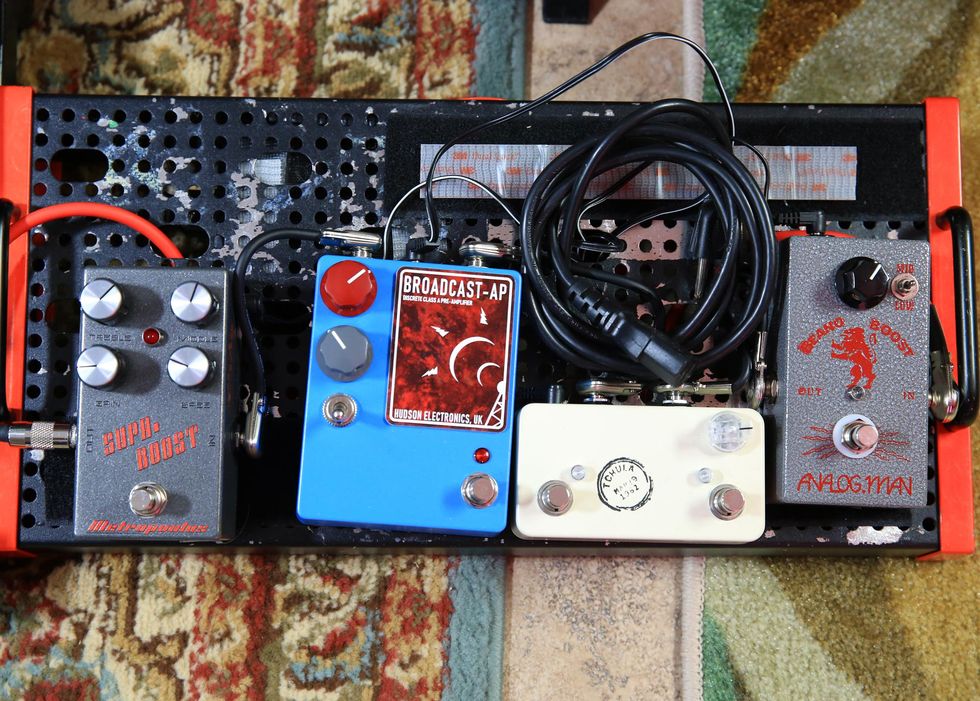
Another board is home to four filthy boxes—a Metropoulos Supa Boost, Hudson Electronics Broadcast-AP preamp (Ariel Posen signature), Lovepedal Tchula Boost, and an Analogman Beano Boost.




![Devon Eisenbarger [Katy Perry] Rig Rundown](https://www.premierguitar.com/media-library/youtube.jpg?id=61774583&width=1245&height=700&quality=70&coordinates=0%2C0%2C0%2C0)






























